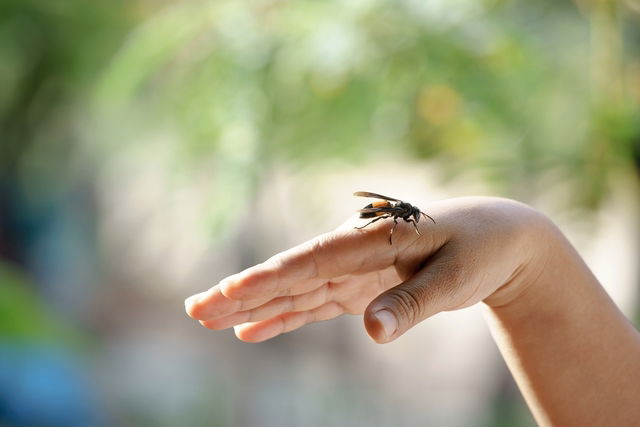First aid for a wasp sting includes removing the stinger, keeping the area clean, and applying ice to relieve pain and swelling.
However, if you experience symptoms like difficulty breathing, facial swelling, tingling or abdominal pain, you should proceed immediately to the hospital. These are symptoms of a serious allergic reaction that require prompt treatment.
Although most bee stings can be cared for at home, if you suspect you are having serious symptoms, you should seek medical attention.

Treatment at home
To treat a wasp or bee sting, you should:
- Remove the stinger with tweezers or needle if it remains the skin.
- Wash the affected area with cold water and mild soap.
- Apply a skin disinfectant over the area, like povidone-iodine.
- Apply ice or a cold compress, wrapped in a towel, to reduce swelling and pain.
- Lightly massage a bug bite ointment into the area, making sure to apply only a thin layer.
If you notice further symptoms, like worsening redness, shortness of breath, facial swelling or low blood pressure, you should seek medical attention immediately. These may be signs of anaphylactic shock, which may a be a more serious allergy.
How to relieve swelling
To reduce swelling around the wasp sting, you can apply ice or a cold compress for 15 minutes, several times per day. It may also help to rest or sleep with the bee sting area elevated.
In very serious cases of swelling, redness and itchiness, the doctor may recommend corticosteroids (like prednisone or prednisolone), antihistamines (like loratadine or desloratadine).
When to see a doctor
You should immediate medical attention if you notice any of the following:
- Redness, itching or swelling that continuously worsens
- Difficulty breathing or swallowing your saliva
- Shortness of breath
- Facial, mouth or throat swelling
- Dizziness or fainting
- Tingling in the head, armpits or groin
- Abdominal pain
- Nausea or vomiting
- Diarrhea
These symptoms can occur within 30 minutes of the initial sting and are generally signs of a more serious allergic reaction. You should proceed to the closest hospital for treatment as soon as possible.
